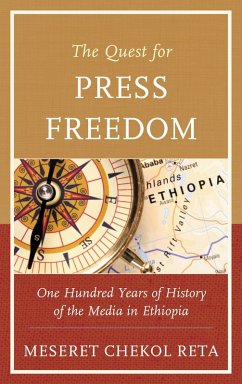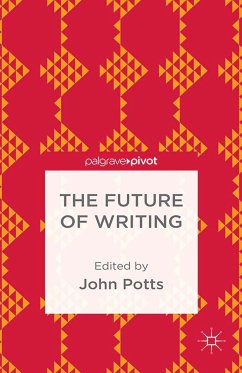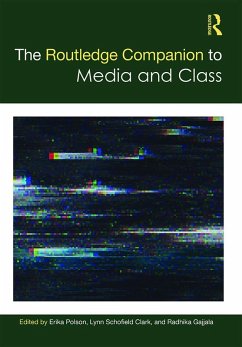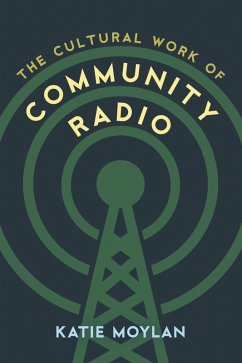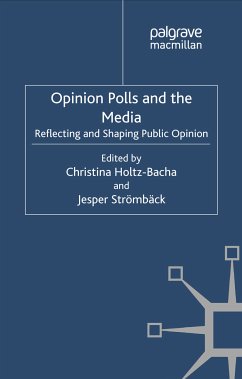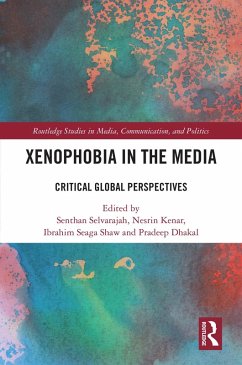
Statistics and the Quest for Quality Journalism (eBook, PDF)
A Study in Quantitative Reporting
Versandkostenfrei!
Sofort per Download lieferbar
30,95 €
inkl. MwSt.
Weitere Ausgaben:

PAYBACK Punkte
15 °P sammeln!
Statistics and the use of numbers, in general, are becoming increasingly important in journalism, this to the point that it cannot be overemphasised. In the age of the so-called big data, journalists' engagement with numbers is seen as the Holy Grail to save the news media from declining streams of revenues, hyper-fragmentation of audiences and the de-politicisation of society in general. Indeed, for some the interaction between journalists and numbers is the future. These voices often refer to the 'datafication' of news - and society in general - and vehemently call for the incorporation of s...
Statistics and the use of numbers, in general, are becoming increasingly important in journalism, this to the point that it cannot be overemphasised. In the age of the so-called big data, journalists' engagement with numbers is seen as the Holy Grail to save the news media from declining streams of revenues, hyper-fragmentation of audiences and the de-politicisation of society in general. Indeed, for some the interaction between journalists and numbers is the future. These voices often refer to the 'datafication' of news - and society in general - and vehemently call for the incorporation of statistics and data into journalism practice as a way of improving the quality of news. They see in the 'data revolution' a real possibility to revolutionise the way journalism is done, making news stories more comprehensive, relevant, accessible and engaging. It is a quest that pretends to use numbers to enhance journalism and provide better public service journalism. To be sure, many journalists are now expected to deal and examine big and small numbers almost on a daily basis at least in ways that they were not asked to do in the past. This against the pressure of time, declining resources and growing masses of quantitative information related to economic, political and social phenomena (including scientific and academic research reports, public opinion data, political polls, and official and non-official datasets, among others).
Therefore, it is impossible today to disassociate the discussion about quality in the news from the use of numbers. In this sense, there are important questions to ask: How do journalists use statistics to articulate news? What are the reasons and rationale behind incorporating numbers in the news? Are news stories really better because they present the audience particular numbers or data? Does the incorporation of statistics make news stories more comprehensive and accessible? The book is an attempt to answer this along other more fundamental questions such as: What do we understand by quality in the news? Is data really the future for journalism?
In this book, we aim at challenging some common assumptions about how journalists engage and use statistics in their quest for quality news. In doing so, it seeks to improve our understanding about the usage of data and statistics as a primary means for the construction of social reality. This is a task, in our view, that is urgent in times of 'post-truth' politics and the rise of 'fake news'. In this sense, the quest to produce 'quality' news, which seems to require incorporating statistics and engaging with data, as laudable and straightforward as it sounds, is instead far more problematic and complex than what is often accounted for.
To start with, the notion of 'quality' in the news remains not only elusive but also contentious. On the one hand, as it is argued here, the notion of 'quality news' and 'quality news providers' has centred around the normative claims of journalism being a public service to society; something that, as we will argue, is questionable both factually and historically. On the other, there is ample evidence to suggest that contrary to the common assumptions statistics do not necessarily bring accessibility, reliability, validity nor credibility to the news stories. Indeed, based on extensive research and drawing from original data, the book explores the use of statistics within the practice of journalism through the lenses of five quality dimensions: relevance, accuracy, timeliness, interpretability and accessibility. According to the authors, by studying each dimension as a threshold that seeks to guarantee the quality of information in news it is possible to understand the whole journalistic workflow, from production to consumption, on how statistics are articulated throughout in order to substantiate quality news stories. The authors highlight the dichotomy between the normative and professional aspirations of journalism, whereby statistics help support the quality of news, and there is a desire to strengthen the ability of storytellers (journalists) through the use of numbers. The book tries to underpin the tensions and issues around journalism and statistics. The central point made is that while the concept of quality and its dimensions remains a theoretical aspiration among journalists, what they really aim to achieve is ultimately credibility and authority. Hence, drawing from this last dichotomy we argue that not only the use of statistics automatically translates into quality journalism but that in some occasions it even hinders the possibility of greater civic engagement with the news.
Therefore, it is impossible today to disassociate the discussion about quality in the news from the use of numbers. In this sense, there are important questions to ask: How do journalists use statistics to articulate news? What are the reasons and rationale behind incorporating numbers in the news? Are news stories really better because they present the audience particular numbers or data? Does the incorporation of statistics make news stories more comprehensive and accessible? The book is an attempt to answer this along other more fundamental questions such as: What do we understand by quality in the news? Is data really the future for journalism?
In this book, we aim at challenging some common assumptions about how journalists engage and use statistics in their quest for quality news. In doing so, it seeks to improve our understanding about the usage of data and statistics as a primary means for the construction of social reality. This is a task, in our view, that is urgent in times of 'post-truth' politics and the rise of 'fake news'. In this sense, the quest to produce 'quality' news, which seems to require incorporating statistics and engaging with data, as laudable and straightforward as it sounds, is instead far more problematic and complex than what is often accounted for.
To start with, the notion of 'quality' in the news remains not only elusive but also contentious. On the one hand, as it is argued here, the notion of 'quality news' and 'quality news providers' has centred around the normative claims of journalism being a public service to society; something that, as we will argue, is questionable both factually and historically. On the other, there is ample evidence to suggest that contrary to the common assumptions statistics do not necessarily bring accessibility, reliability, validity nor credibility to the news stories. Indeed, based on extensive research and drawing from original data, the book explores the use of statistics within the practice of journalism through the lenses of five quality dimensions: relevance, accuracy, timeliness, interpretability and accessibility. According to the authors, by studying each dimension as a threshold that seeks to guarantee the quality of information in news it is possible to understand the whole journalistic workflow, from production to consumption, on how statistics are articulated throughout in order to substantiate quality news stories. The authors highlight the dichotomy between the normative and professional aspirations of journalism, whereby statistics help support the quality of news, and there is a desire to strengthen the ability of storytellers (journalists) through the use of numbers. The book tries to underpin the tensions and issues around journalism and statistics. The central point made is that while the concept of quality and its dimensions remains a theoretical aspiration among journalists, what they really aim to achieve is ultimately credibility and authority. Hence, drawing from this last dichotomy we argue that not only the use of statistics automatically translates into quality journalism but that in some occasions it even hinders the possibility of greater civic engagement with the news.
Dieser Download kann aus rechtlichen Gründen nur mit Rechnungsadresse in A, D ausgeliefert werden.




